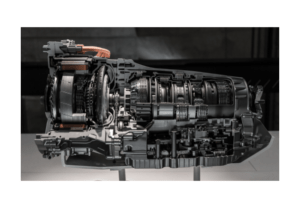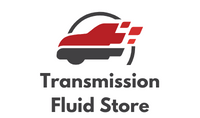A continuously variable transmission (CVT) is an automatic transmission that can change seamlessly through an infinite number of gear ratios. Unlike traditional automatic transmissions that have a fixed number of gear ratios, a CVT uses a belt and pulley system to provide a smooth and efficient driving experience. By maintaining a constant engine speed, the CVT can optimize the engine’s power output, resulting in improved fuel efficiency and a smoother driving experience.
Understanding what is a CVT Transmission Honda for vehicle owners, because many newer Honda models, such as the Honda Civic, Honda Accord, and Honda Fit, are equipped with a Continuously Variable Transmission. Knowing how the CVT transmission works and how to properly maintain it can help ensure greater efficiency, better fuel economy, and reliability of the vehicle.
Honda first introduced continuously variable transmission in the late 1990s with the Honda Civic HX model. Since then, Honda has continued to refine and improve the technology, making it available in more Honda models. Today, Honda’s CVT transmission is known for its efficiency, smoothness, and reliability, and is a popular choice among Honda car drivers.
Contents
Definition of CVT transmission

A CVT transmission is an automatic transmission that provides a continuously variable range of gear ratios instead of a fixed number of gears like traditional automatic transmissions. CVT transmissions work by utilizing a belt and pulley system to create an infinite number of gear ratios. The pulleys change their widths in order to adjust the effective ratio and optimize engine power, resulting in a smooth shifting process and efficient driving experience.
CVT transmissions differ from traditional automatic transmissions in that they have a continuously variable range of gear ratios, while traditional automatic transmissions have a fixed number of gears. With CVT transmissions, there are no distinct shifts between gears, allowing for a smoother driving experience. Additionally, CVT transmissions have improved fuel efficiency because they can optimize engine power output more efficiently than traditional automatic transmissions.
In Honda vehicles, CVT transmissions utilize a system of pulleys and belts to provide an infinite number of gear ratios. As the vehicle’s speed increases, the pulleys adjust their widths to maintain the optimal gear ratio for the engine. This results in improved fuel efficiency and smoother acceleration compared to the process of traditional automatic transmissions. Honda’s CVT transmissions also have a sport mode that can provide a more engaging driving experience by allowing for higher revs before shifting.
Benefits of CVT Transmission in Honda
One of the main benefits of CVT transmission in Honda vehicles is improved fuel economy. Because CVT transmissions can adjust to provide the optimal gear ratio for the engine at any given moment, they are able to maximize fuel efficiency by ensuring that the engine is always running at its most efficient speed. This results in better gas mileage and reduced emissions.
Another benefit of CVT transmission in Honda vehicles is a smoother driving experience. With CVT transmissions, there are no distinct gear shifts, which can lead to a more seamless and enjoyable driving experience. Additionally, because the engine can operate at a more consistent speed, the ride is often quieter and less jarring.
Finally, CVT transmission in Honda vehicles can also result in increased durability and reduced maintenance. Because there are fewer moving parts than in traditional automatic transmissions, there is less wear and tear on the transmission, resulting in fewer repairs and longer transmission life. Additionally, because the CVT transmission does not require regular maintenance such as fluid changes, the overall cost of ownership may be lower over the life of the vehicle.
Drawbacks of CVT Transmission in Honda
One of the main drawbacks of CVT transmission in Honda vehicles is the limited power handling capability. Because the belt and pulley system used in CVT transmissions can only handle so much power, Honda vehicles equipped with CVT transmissions may not be ideal for towing or heavy hauling applications. This can limit the versatility of the vehicle.
Sports cars are not good vehicles to have this option, because the Honda CVT does not come in a manual transmission version.
Another drawback of CVT transmission in Honda vehicles is noise and vibration. While CVT transmissions can provide a smoother driving experience, they can also produce a droning noise that some drivers may find unpleasant. Additionally, because the engine is often operating at higher RPMs, there may be more vibration felt through the vehicle depending on your driving style.
Finally, the cost of repair or replacement of a CVT transmission in Honda vehicles can be quite high. While they may require less maintenance overall, if a CVT transmission does fail, the cost of repair or replacement can be significant. This is partly due to the complexity of the transmission and the limited availability of replacement parts.
Maintenance and Care of CVT Transmission in Honda
To ensure the longevity and reliability of a Honda vehicle equipped with a CVT transmission, it is important to follow the recommended maintenance schedule. This schedule typically includes regular inspections of the transmission fluid level and condition, as well as periodic fluid changes.
When performing maintenance on a CVT transmission in a Honda vehicle, it is important to use the correct fluid. Using the wrong fluid type can result in reduced performance and potential damage to the transmission. It is recommended to use only Honda-approved fluids for CVT transmissions.
If there are issues with the CVT transmission in a Honda vehicle, there are several signs to watch for. These can include a whining or buzzing noise during acceleration, slipping or jerking during gear changes, or a delay in response when shifting into gear. If any of these symptoms are present, it is important to have the transmission inspected by a qualified technician to prevent further damage.
Comparison of CVT Transmission and Traditional Automatic Transmission in Honda
There are several differences between CVT transmissions and traditional automatic transmissions in Honda vehicles. In terms of performance, CVT transmissions generally offer smoother acceleration and better fuel efficiency due to their continuously variable gear ratios. Traditional automatic transmissions, on the other hand, can provide more responsive and faster acceleration.
In terms of cost, CVT transmissions are generally more expensive to manufacture and repair than traditional automatic transmissions. However, they can offer longer service intervals and potentially reduce maintenance costs over the life of the vehicle.
When it comes to maintenance and repair, CVT transmissions require specific fluids and filters that may not be available at all repair shops. Traditional automatic transmissions may be more commonly serviced and repaired, and replacement parts may be more readily available. It is important to consider these factors when comparing the two types of transmissions for a Honda vehicle.
Conclusion what is a CVT Transmission Honda
The CVT transmission is a type of transmission that uses continuously variable gear ratios to provide a smoother driving experience and better fuel efficiency in Honda vehicles. While it offers several benefits over traditional automatic transmissions, it also has some drawbacks, such as limited power handling and increased repair costs. Maintaining and caring for a CVT transmission is important to ensure its longevity and performance.
For Honda owners considering a vehicle with a CVT transmission, it is important to understand the benefits and drawbacks and to carefully consider their driving needs and habits. It is also recommended to research the specific model and year of the Honda vehicle to determine the reliability and maintenance requirements of the CVT transmission.
CVT transmission technology is constantly evolving, and Honda is among the leading automakers in this field. As fuel efficiency and environmental concerns continue to drive automotive technology advancements, it is likely that CVT transmission will become more common in Honda vehicles and other automakers. However, it is important to continue research and development to address the current drawbacks of CVT transmission technology and to ensure its long-term viability and reliability in Honda vehicles.

1 thought on “What is a CVT Transmission Honda – Learn the Benefits and Drawbacks”
Comments are closed.